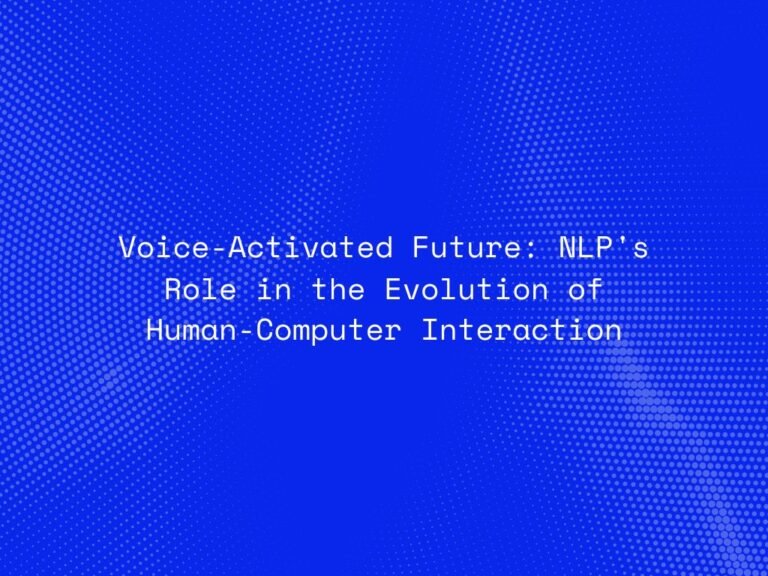The way we interact with computers has undergone radical transformation over the past few decades—from keyboards and command-line interfaces to touchscreens and voice assistants. But with the emergence of Large Language Models (LLMs) like GPT-4, Claude, and Gemini, a new era of human-computer interaction (HCI) is rapidly unfolding.
LLMs enable computers to understand and generate human-like language, breaking down the barriers of traditional interfaces and making technology more intuitive, accessible, and intelligent. Instead of learning how to operate software, users can now simply converse with it—in natural language.
This blog explores how LLMs are reshaping the landscape of HCI, their transformative potential across industries, the technologies enabling this shift, and what it means for the future of human-computer collaboration.
What Are Large Language Models?
Large Language Models (LLMs) are advanced AI systems trained on massive datasets of text from the internet, books, and code repositories. They use deep learning techniques, particularly transformer architectures, to generate coherent, context-aware responses in natural language.
These models are capable of:
-
Understanding and responding to queries
-
Summarizing documents
-
Translating languages
-
Writing code
-
Engaging in dynamic conversations
Their growing linguistic fluency makes them ideal tools for next-generation interfaces that require minimal user training and offer richer, more human-like engagement.
The Evolution of Human-Computer Interaction
Let’s briefly look at how HCI has evolved:
-
Command-Line Interfaces (CLI) – Required specialized knowledge.
-
Graphical User Interfaces (GUI) – Introduced icons, windows, and visual navigation.
-
Touch Interfaces – Made interaction more intuitive and tactile.
-
Voice Interfaces – Enabled basic spoken commands with assistants like Siri and Alexa.
-
Conversational Interfaces Powered by LLMs – Allow dynamic, multi-turn dialogue and understanding of complex queries.
This shift to LLM-driven interfaces is not just evolutionary—it’s revolutionary.
How LLMs Are Redefining HCI
1. Natural Language Interfaces (NLI)
LLMs allow users to interact with software in plain language. Instead of learning how to operate a tool, users can simply ask questions or issue instructions.
-
Example: “Summarize this report,” or “Generate a project timeline for the next two weeks.”
2. Personalized Digital Assistants
LLMs can retain context across interactions and adapt responses based on user preferences, offering personalized experiences far beyond static bots.
-
Example: Tailoring content recommendations, writing emails, or scheduling meetings based on individual style and habits.
3. Multimodal Interfaces
Advanced LLMs are integrating with images, audio, and video, enabling truly multimodal interaction. Users can now show, tell, and ask—just as they would with a human.
-
Example: Upload a photo and ask, “What’s wrong with this product design?”
4. Accessibility Enhancement
LLMs are enabling new modes of interaction for users with disabilities, such as speech-to-text, text-to-speech, and intent recognition, making technology more inclusive.
-
Example: Real-time transcription for the hearing impaired, or screen readers powered by natural language explanations.
5. Real-Time Collaboration
Through integrations with productivity tools, LLMs serve as co-pilots—offering suggestions, drafting content, and automating repetitive tasks.
-
Example: Co-authoring documents or generating summaries during meetings.
6. Lowering the Learning Curve
By replacing buttons and menus with conversational input, LLMs reduce the cognitive load required to operate complex software systems.
-
Example: Instead of navigating nested menus in analytics software, a user can type: “Show me the revenue growth from last quarter.”
Impacts Across Industries
-
Healthcare: Doctors can describe symptoms, and LLMs can assist in diagnosis or generate medical documentation in seconds.
-
Education: Tutors powered by LLMs provide personalized learning experiences with natural feedback loops.
-
Customer Service: LLM-powered chatbots handle nuanced queries, offer empathetic responses, and escalate issues only when necessary.
-
Enterprise Productivity: Knowledge workers use LLMs to generate reports, analyze data, and automate email responses.
Challenges in LLM-Driven HCI
Despite the benefits, some challenges persist:
-
Hallucination: LLMs can generate plausible but inaccurate responses.
-
Bias and Ethics: Inherited biases from training data may affect outcomes.
-
Privacy: LLMs may inadvertently expose or retain sensitive data.
-
Explainability: LLMs often lack transparency in how they reach conclusions.
-
Context Management: Maintaining long, multi-turn conversations with relevance and continuity is still being improved.
Future of Human-Computer Interaction with LLMs
The next wave of LLM-powered HCI will focus on:
-
Voice-first and multimodal applications
-
Persistent memory and personalized assistants
-
Contextual understanding across sessions and devices
-
Greater explainability and transparency in AI behavior
-
Seamless integration into everyday workflows
We’re moving toward a world where computers feel more like collaborators than tools—responding, reasoning, and adapting in ways that feel genuinely intelligent and human-centric.
Conclusion
Large Language Models are not just improving how we interact with machines—they are redefining the entire experience. By enabling natural, conversational, and context-aware interaction, LLMs are bridging the gap between human intent and machine capability.
As this technology becomes more widespread, expect human-computer interaction to be more intuitive, intelligent, and personal than ever before—empowering users not just to use technology, but to partner with it.




